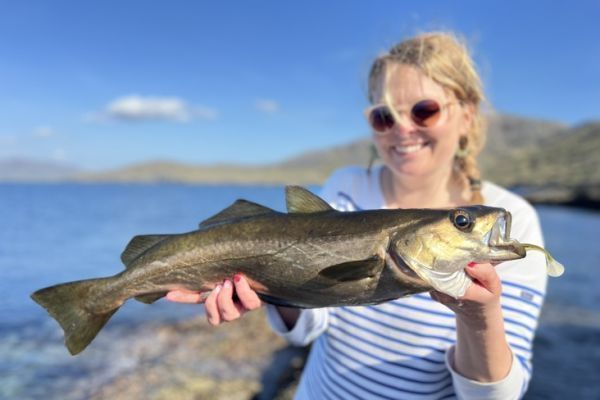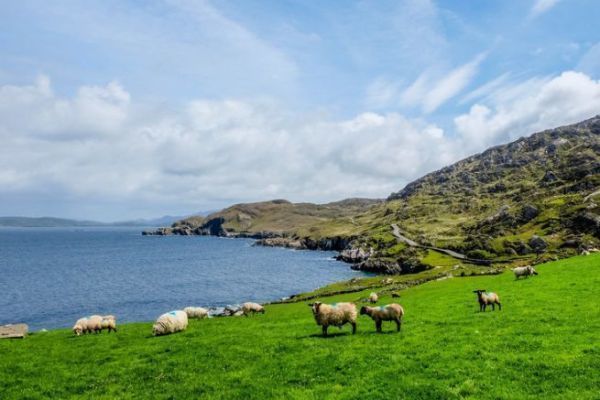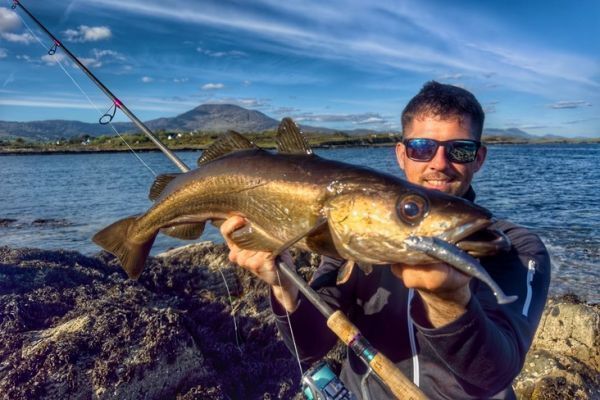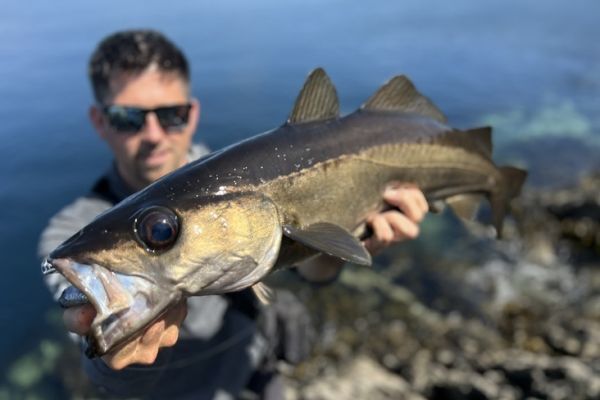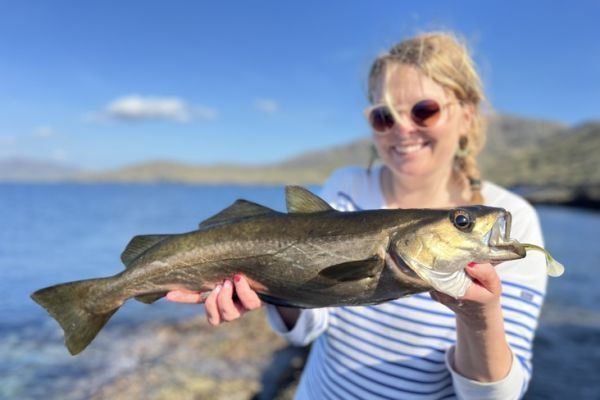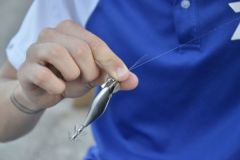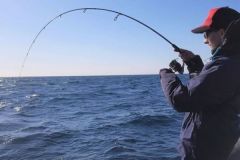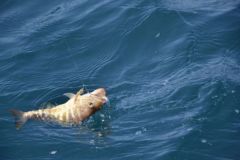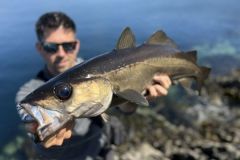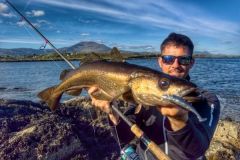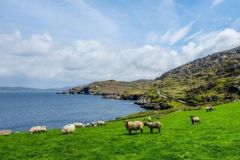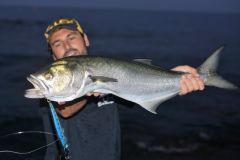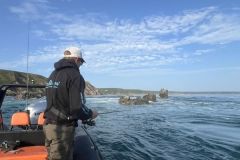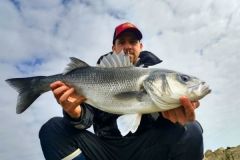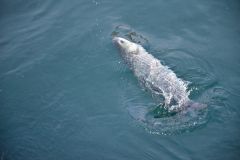Lessons learned from this fishing trip
Every fishing trip is an additional learning experience. This stay, outside my usual zones, was a very rich learning experience.
Fishing this deep from the shore is not something you're used to, and it calls for a rigorous selection of equipment. Rods must be more powerful than usual to allow the use of lures with lead heads weighing at least 25 to 30 grams.
This lack of knowledge led me to underestimate this aspect, and I set off with rather light equipment.
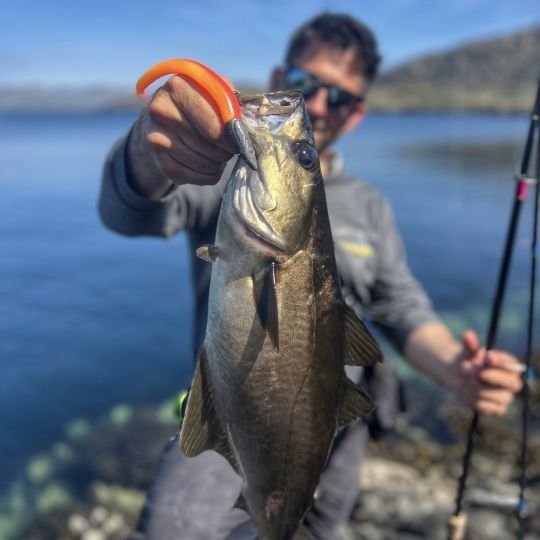
The search for fishing spots requires a particular methodology: locate the strong drop-offs accessible from the shore where kelp is present.
We're not used to having such depths so close to the coast, whether in the Channel or the Atlantic.
From the yellow place, but not only...
The aim of the trip was to target the yellow spot, but other species are also present.
Sea bass are present in the area, but in very small numbers. Only one fish was landed during our stay. Admittedly, I was initially puzzled by this, and looked for an explanation.
The areas I fished were deep, with very little current. These are clearly not the preferred habitats of sea bass in this season, which prefers shallower areas close to the shore, where the current is stronger.
Then, by talking to the locals, I learned that Kerry isn't the best region to target the bar. West Cork is much better, as is the Waterville area.
Ireland, on the other hand, is rich in old fish. This unjustly overlooked fish is a fierce fighter. Some of the catches are very large. The density is high, which means you can have fun and vary the pleasures.
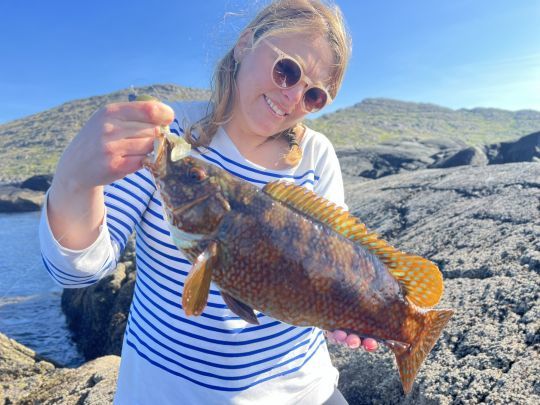
If you fish slowly, you're sure to get a few out.
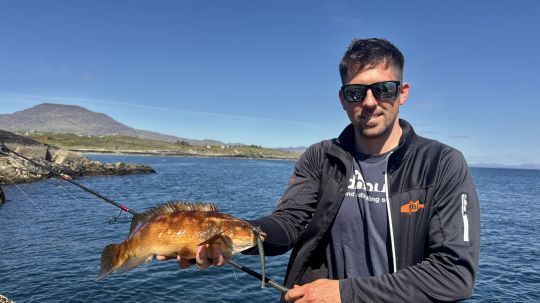
Beautiful yellow lees
That's what I was there for! To get some nice yellow lees off the edge. In France, I'm used to doing this on boats, where the search for big fish is done in deep areas such as wrecks. But from the shore, it's a different approach. The battle will be different, and the obstacles more numerous.
Ireland lived up to all its promises, with many fish over 70 centimetres. The powerful rush, during which the fish tries to regain the bottom and enter the kelp fields, is the most critical part of the fight. It's important to try to restrain the fish and keep the rod as high as possible.
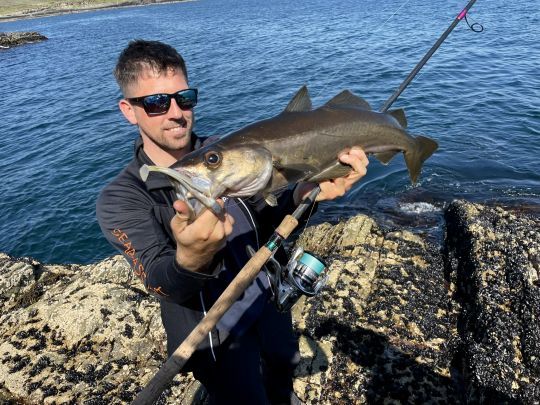
A well-adjusted drag is a guarantee of success: too weak and the fish will slip through the seaweed; on the other hand, if it's set too firmly, the line may break.

 /
/ 